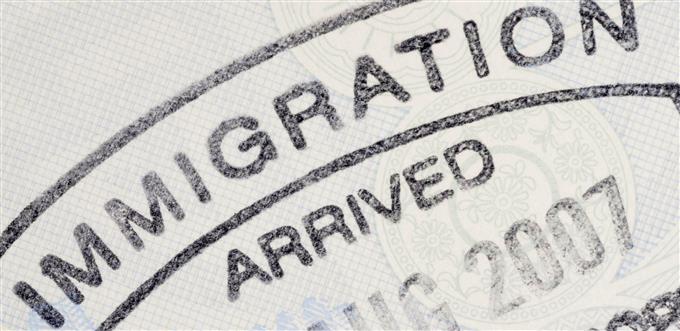New study highlights economic benefit of central Arkansas’ immigrant population
by May 1, 2018 12:39 pm 1,087 views

A study published Tuesday (May 1) by the Little Rock Regional Chamber of Commerce, the City of Little Rock and a Washington, D.C.-business coalition reports that foreign-born residents contributed $2 billion annual in gross domestic product to the central Arkansas economy in 2016.
The study’s release coincided with federal judge’s ruling in the nation’s capital against President Donald Trump’s efforts to end the federal Deferred Action for Childhood Arrivals (DACA) policy, a key goal of the Washington, D.C.-New American Economy (NAE) group that completed the study on Little Rock’s immigrant population.
The local report, “New Americans in Little Rock,” highlights the significant role the foreign-born population in the Little Rock metro area plays in labor force growth, new business creation and home ownership. The six-page NAE study also notes the role immigrants play in preserving local jobs— including an estimated 1,346 manufacturing jobs in Little Rock area. (Link here for a PDF of the report.)
“The Little Rock region has a diverse culture and economy. This diversity is a major selling point when marketing our region to the rest of the world,” said Jay Chesshir, president and CEO of the Little Rock Chamber. “The New American Economy report quantifies for ourselves, and others, how meaningful of an impact immigrants have on our region.”
“Little Rock is renowned for our hospitality and we will continue extending that welcome to our immigrant families. As the NAE report shows, these new Arkansans help fuel our economy and are a major catalyst for new businesses, helping create jobs. They also contribute to our culture and enhance all of our residents’ quality of life,” said Little Rock Mayor Mark Stodola.
Stodola, Little Rock’s longtime incumbent mayor, is facing challenges in the 2018 mayoral race from candidates Frank Scott and Warwick Sabin.
Among the notable demographic information in the report is that there were 29,267 immigrants living in the Little Rock metropolitan area in 2016, about 4% of the region’s population. Between 2011 and 2016, the region’s immigrant population grew by 5.8%, outpacing the overall regional population growth at 5.2%.
Besides the outsized contribution to the region’s GDP growth, the NAE report also noted that immigrant households brought in $917 million in annual earnings. Among that income generation, $241.6 million went to federal, state and local taxes, leaving local foreign-born families with annual spending power of $675.4 million. Foreign-born residents also supported federal social programs, contributing $79.6 million and $22.6 million annually to social security and Medicare, the report said.
Overall, immigrants from Mexico made up the largest share of the region’s foreign-born population at 34.4%. India was next at 8.1%, followed by China, Guatemala and the Philippines at 7.2%, 4.4% and 3.3%, respectively. El Salvador, Korea, Vietnam, Germany and Honduras rounded out the top 10.
“The newest numbers out of Little Rock show, once again, how much of a boon immigration is to the American economy,” said NAE President John Feinblatt. “Immigration strengthens the local tax base and creates jobs, and as Little Rock continues to welcome new homeowners and entrepreneurs, the entire metro area will reap the rewards.”
NAE is a coalition of business leaders and mayors launched by Michael Bloomberg and Rupert Murdoch to influence public opinion and policymakers toward comprehensive immigration reform. The group has released similar reports in dozens U.S. cities, including Memphis, Dallas, Tulsa and St. Louis.
The group also released a similar study of Northwest Arkansas in late 2016, in conjunction with EngageNWA and the Winthrop Rockefeller Foundation. That study showed the immigrant population accounted for 42% of Northwest Arkansas’ growth between 2009 and 2014, and contributed $3.1 billion to the region’s GDP in 2014.
NAE is also among several influential pro-business groups pushing the Trump administration to implement the DACA, which grants law-abiding undocumented youth a renewable two-year reprieve from deportation and the ability to work in the United States if they are in, or have graduated from, high school.
Last year, President Trump set March 5 has the expiration date for DACA policy. Under former President Barack Obama, that program provided temporary work and study permits to 700,000 immigrants brought illegally to America as children, known as Dreamers. U.S. Judge John Bates of the District of Columbia on Tuesday ordered the Trump administration to halt attempts to end DACA and to accept new applicants.
Following are other findings of the “New Americans in Little Rock” report.
Despite making up just 4% of the overall population, immigrants represented 8.5% of entrepreneurs in the Little Rock metro area in 2016. This makes the foreign-born 66.4% more likely than the U.S.-born to be entrepreneurs.
Immigrants in the Little Rock metro area helped create or preserve 1,346 local manufacturing jobs by 2016. Because of the role immigrants play in the workforce helping companies keep jobs on U.S. soil, immigrants in the region helped create or preserve jobs that would have otherwise vanished or moved elsewhere.
Immigrants play an outsize role as STEM workers. The foreign-born population’s share of workers in Science, Technology, Engineering, and Math is more than twice their share of the population — 9% versus 4%.
On Monday, the Little Rock Chamber, Mayor Stodola and other local business and community leaders in central Arkansas unveiled the MetRock 2020 strategic plan, which identifies six priorities that regional leaders hope to address to boost the metropolitan area’s economic development and job recruitment efforts.
